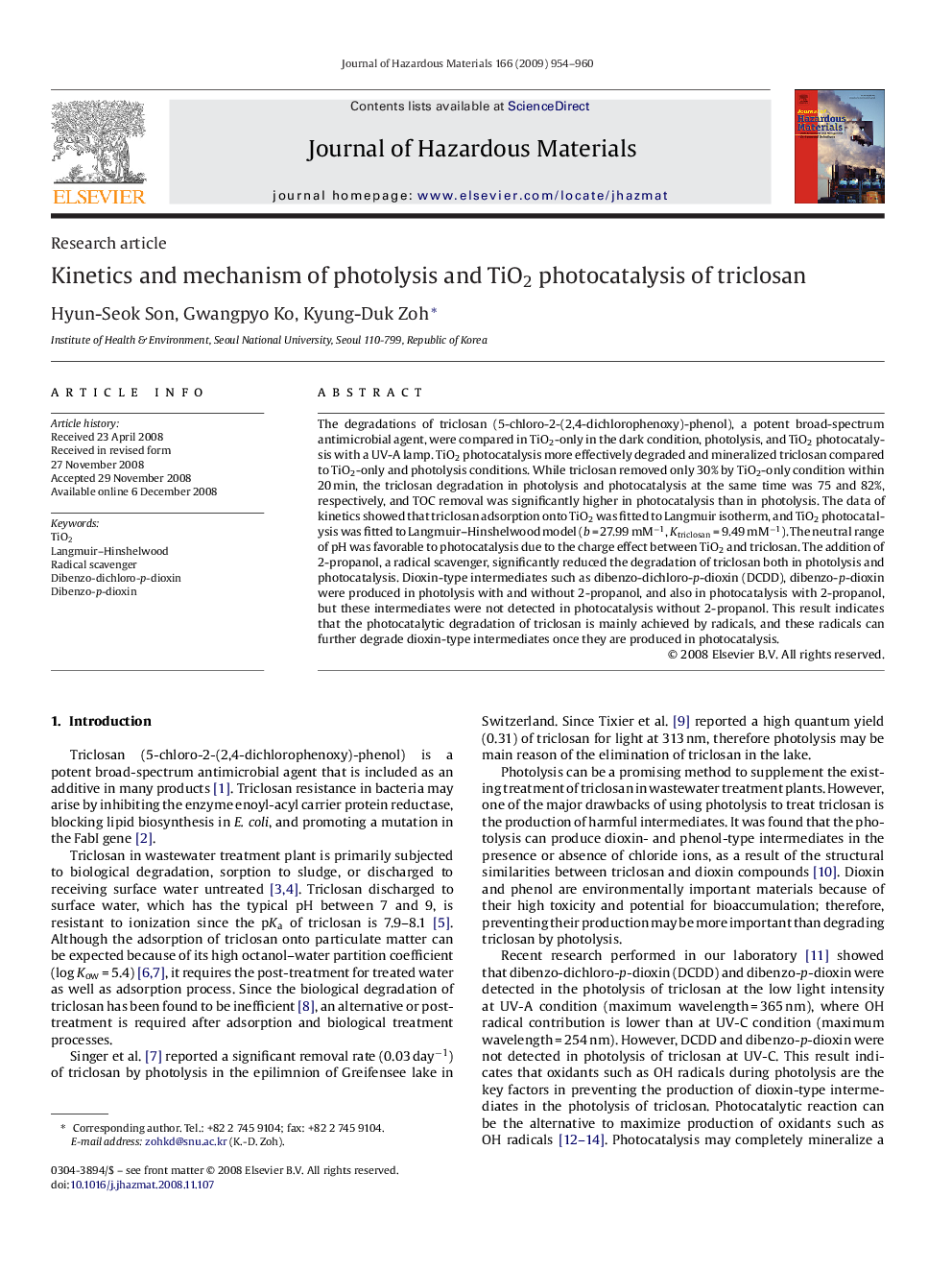| Article ID | Journal | Published Year | Pages | File Type |
|---|---|---|---|---|
| 582037 | Journal of Hazardous Materials | 2009 | 7 Pages |
Abstract
The degradations of triclosan (5-chloro-2-(2,4-dichlorophenoxy)-phenol), a potent broad-spectrum antimicrobial agent, were compared in TiO2-only in the dark condition, photolysis, and TiO2 photocatalysis with a UV-A lamp. TiO2 photocatalysis more effectively degraded and mineralized triclosan compared to TiO2-only and photolysis conditions. While triclosan removed only 30% by TiO2-only condition within 20 min, the triclosan degradation in photolysis and photocatalysis at the same time was 75 and 82%, respectively, and TOC removal was significantly higher in photocatalysis than in photolysis. The data of kinetics showed that triclosan adsorption onto TiO2 was fitted to Langmuir isotherm, and TiO2 photocatalysis was fitted to Langmuir-Hinshelwood model (b = 27.99 mMâ1, Ktriclosan = 9.49 mMâ1). The neutral range of pH was favorable to photocatalysis due to the charge effect between TiO2 and triclosan. The addition of 2-propanol, a radical scavenger, significantly reduced the degradation of triclosan both in photolysis and photocatalysis. Dioxin-type intermediates such as dibenzo-dichloro-p-dioxin (DCDD), dibenzo-p-dioxin were produced in photolysis with and without 2-propanol, and also in photocatalysis with 2-propanol, but these intermediates were not detected in photocatalysis without 2-propanol. This result indicates that the photocatalytic degradation of triclosan is mainly achieved by radicals, and these radicals can further degrade dioxin-type intermediates once they are produced in photocatalysis.
Related Topics
Physical Sciences and Engineering
Chemical Engineering
Chemical Health and Safety
Authors
Hyun-Seok Son, Gwangpyo Ko, Kyung-Duk Zoh,
